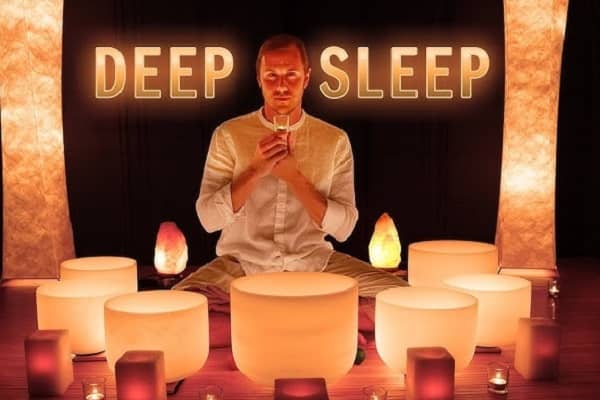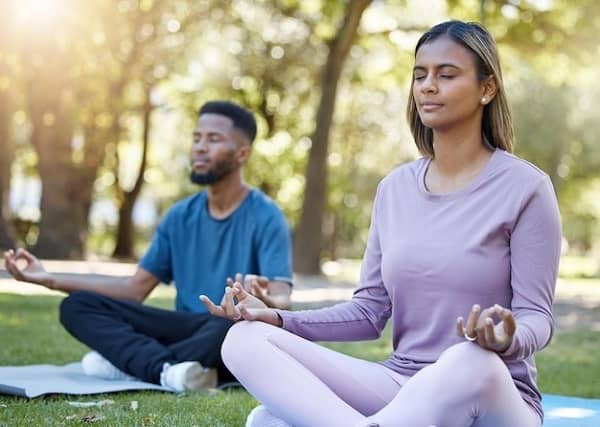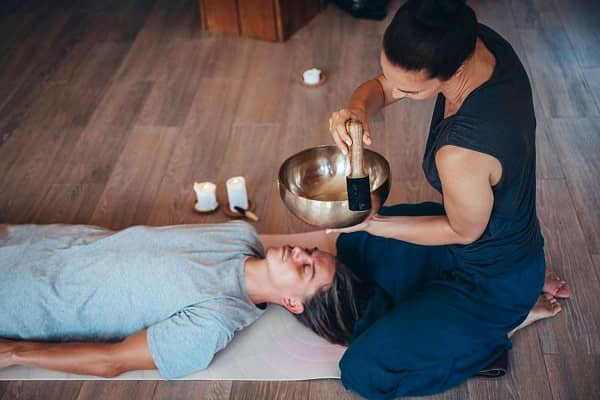In the previous article, we talked about, Sleep and Digestion where sleep, digestion and exercise are the three main pillars of healthy growth of our body, Similarly in this article, we will discuss in detail, Spiritual Practices for Deep Sleep: Cultivating Inner Peace for Restorative Rest.
For deep sleep peaceful environment is created, when you feel calmer and more relaxed at bedtime, you are likely to get into the transition of the deep sleep stage. As we know deep sleep and peaceful sleep are interconnected components of the overall sleep experience.
The Subjective experience of sleep characterised by a sense of calmness, relaxation and tranquillity is known as peaceful sleep. For both mental and physical relaxation both peaceful and deep sleep is essential.
What are the main stages of sleep?
Sleep consists of several stages, which are broadly categorized into two main types, non-rapid eye movement (NREM) sleep and rapid eye movement (REM) sleep.
1. Non-Rapid Eye Movement
Non-rapid Eye Movement also has three different types of stages,
a. Stage 1 Non-Rapid Eye Movement-
This stage is full wakefulness of sleep. In this stage, it has a light sleep stage by slow brain waves and muscle relationships. Similarly, in this stage, people have light sleep and can be easily awakened
b. Stage 2 Non-Rapid Eye Movement-
This stage is a slightly deeper stage than stage 1, in which sleep spindles and k-complexes are present. Where your brain waves slow down even more, and your heart rate and breathing become even more regular in 2nd stage
c. Stage 3 Non-Rapid Eye Movement-
Stage 3 is the deepest stage of sleep or slow-wave sleep (SES). In this stage, your brain waves are too slow even your heart rate and breathing are slowest at this stage. During this stage, it is very hard to awaken someone, if they are awakened then they may feel disoriented or groggy.
2. Rapid Eye movement (REM) sleep-
This stage is also considered the main stage of sleep that occurs cyclically throughout the night, During this sleep your brain’s waves become more active, similar to when you are awakened and the eyes move rapidly in various directions. During this stage, your muscles become paralyzed and feels like most of you are in a dream, dreaming occurs, and brain activity resembles wakefulness.

The reason why people’s deep sleep is disturbed?
- Various factors can disturb deep sleep
- Mental Health conditions
- Noisy Surrounding
- Day Nap
- Lifestyle Factors
- Irregular Sleep Schedule
- Medications and Substances
- Sleep Disorders
- Age-related Changes
What are the Spiritual Practices for Deep Sleep?
Spiritual practices can show deep benefits for promoting deep sleep by calming the mind and reducing stress. Those who have sleep disturbance can prepare for Spiritual practises. Spiritual practices mainly focus on a relaxed calmer state, ultimately aiding deep sleep.
Here are some of the spiritual practise that you can practice in your home,
Mediation and mindfulness:
Mediation is one of the beneficial methods used since ancient periods. Involving in mindfulness meditation before bedtime is quite the mind and relaxes the body, this is done to train your attention to focus on the present moment and quiet the mind chatter. Also, it can help with stress and anxiety, making it easier to transition into deep sleep. Here are the simple methods that you can follow for a mindful mind,
- Find a Comfortable Position:
- Set the Scene
- Focus on your breathing
- Deep breathing inhale and exhale
- Body Scan
- Mantra or Affirmation
- Continue for Several Minutes

Yoga and Stretching:
Yoga and stretching are the kind of exercise that helps to release tension from the body, promote relaxation calm the mind and prepare you for restorative rest. Here are some useful you that can help you,
- Child’s Pose (Balasana)
- Seated Forward Bend (Paschimottanasana)
- Reclining Bound Angle Pose
- Legs-Up-the-Wall Pose (Viparita Karani)
- Corpse Pose (Savasana)
- Gentle Neck and Shoulder Stretches
- Deep Breathing and Relaxation

Journaling:
Journaling can be done before bedtime, then it can be a powerful practice for promoting deep sleep by helping to clear your mind, process emotions and create a sense of closure for the day. Writing down your thoughts before bed can help to clear negative thoughts off your mind. So here are the tips on how can you do journaling,
- Set the scene
- Write down about your day
- Express Gratitude
- Release Tension and Worries
- Practice Gratitude Again
- Practice daily
- Place Your Journal Away

Aromatherapy:
With the help of Aromatherapy, you can calm your mind, reduce stress and create a replacing atmosphere which can be helpful for better sleep. Essential oils are also known for their calming and soothing properties, such as lavender, chamomile, or sandalwood, into your bedtime routine. Simple things you can follow for Aromatherapy for stress-less and deep sleep.
- Choose Relaxing Essential Oils
- Diffusion
- Room Spray
- Topical Application
- Aromatic Bath
- Bedtime Ritual
- Deep Breathing and Relaxation
- Consistency

Sound Healing:
Healing and peaceful sound also can be a powerful practice for the promotion of deep sleep. It can help reduce stress, create a peaceful sleep, and healthy deep sleep. Here are the methods of how you can practice for deep sleep,
- Calming Sounds:
- Use White Noise or Pink Noise
- Play Ambient Music or Binaural Beats
- Use Headphones or Speakers
- Healing Track
- Incorporate Guided Meditations or Affirmations:
- Create a Bedtime Ritual
- Practice Consistently

FAQs
What is Rapid Eye movement (REM) sleep?
This stage occurs cyclically throughout the night, During this sleep your brain’s waves become more active, similar to when you are awakened and the eyes move rapidly in various directions. During this stage, your muscles become paralyzed and feels like most of you are in a dream, dreaming occurs, and brain activity resembles wakefulness.
What is the role aromatherapy plays in deep sleep?
Aromatherapy helps promote deep sleep by using essential oils with calming and sedative properties, such as lavender or chamomile, to create a soothing sleep environment. The inhalation of these aromas can induce relaxation, reduce stress, and enhance sleep quality.
Does mindfulness Meditation help in Deep Sleep?
Yes, Meditation helps in deep sleep, mindfulness meditation before bedtime quiets the mind and relaxes the body, this is done to train your attention to focus on the present moment and quiet the mind chatter.
Also, read more about Sleep Tight: The Role of Food in Managing Insomnia and Anxiety – Sleeps Eight
